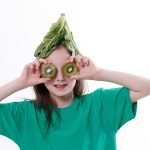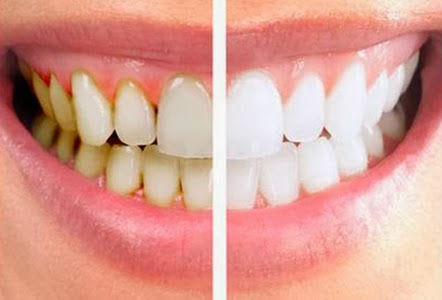Having a baby is full of so many firsts. Some mothers look forward to their child’s first foods. Some babies may be sitting up on their own between 4-5 months. Which means foods will not be long to follow. You can start your baby on a number of different purees to help get them acclimated to foods, and different tastes other than breastmilk or formula. Around 6 months some babies may be ready for solid foods. If not then usually around 7-8 months all babies will be ready for solid foods in one form or another.
There are different approaches to how to introduce foods to your baby. You can do baby led weaning which leans away from the puree, spoon fed feeding. Allowing your baby to explore their food on their own and feed themselves. Spoon fed feeding, usually starts with purees and then introduces solid foods later on. Some people will do a combination of the two different approaches. Starting with spoon feeding and transitioning their child to baby led weaning. When introducing new foods to your baby make sure you give them new foods one at a time. With about 3-4 days in between each new food. This can help you see if there is any reaction your child has to a new food. Prepare yourself this food stage in your child’s life will be messy.
Teething for babies can happen at lots of different times. Some babies are born with teeth. Teething can start as early as 4 months, or as late as 12 months. The normal range is between 6-12 months. There are lots of foods you can start your baby eating without having to wait for their first tooth to pop through. Coming up with these foods may be slightly difficult if it is your first time feeding a little one with no teeth.
If your baby has no teeth, think of foods that are soft and mushy. They should be easy for your child to be able to gum to break them down and swallow. Foods should also be easily grabbed, this is good when your child is able to use their pincher grab, which is their pointer finger and thumb to get food to their mouths. Avoid foods that are choking hazards like grapes, hot dogs, popcorn, raw vegetables, meat, and sticky textures. You can offer a variety of flavors to your child, savory, sweet, and tangy. When preparing foods for a child with no teeth, you want to make sure the food is soft in texture, and is chopped to bite sized pieces that are half and inch or smaller.
Early exposure to allergen foods may help prevent food allergies in the future for your little one. Common food allergies are eggs, peanuts, wheat, sesame, cow’s milk, and tree nuts. Introduce foods one at a time with at least 3 days in between to make sure there is no reaction. Immediate reactions to foods can include hives, swelling of lips, face, eyes, itching, vomiting, stomach pain, or difficulty breathing. Delayed reactions can be colic, blood in stool, or poor growth. Anaphylaxis can occur with severe reactions and can be life threatening. Signs of anaphylaxis are difficulty breathing, swelling of the throat, and lower blood pressure.
A great food to start your little one on is sweet potato. It can be mashed, steamed, or baked. You can cut it into French fry shape so it is easy to pick up. You can smash it for mashed sweet potato. Baked or steamed sweet potato can be cut up into small bite sized pieces. Just make sure you have removed the skin.
Fruits that are good for your baby with no teeth are banana, avocado, peach, mango, strawberries, watermelon, pear, apple, or plums. Make sure the fruit is ripe and soft. Remove skin from all fruits before feeding them to your baby. Cut the fruits into small pieces to help stop choking. If the fruits are too hard, like the pear or apple, you can stew them before to make them softer.
Scrambled eggs are a great option for your little one. You can make up a baby omelet or a good scrambled egg. Eggs are a high allergy food so make sure you watch for reactions. Introducing eggs early can help prevent egg allergies when your child is older. Make sure eggs are cooked thoroughly before giving them to your baby. If you don’t want to give your child eggs only to make sure they don’t have a reaction, you can make a banana pancake with a cooked egg in the batter to give your baby beforehand.
Pasta is also another good thing you can give your child with no teeth. Make sure it is pasta that is not a choking hazard. Make sure the pasta is extremely soft and cut up into pieces. The best pasta options are spaghetti or flat egg noodles. You can also put some marinara sauce on the pasta for your baby, just be prepared for a mess.
Bread can be chewy and stick to your mouth. Before giving your baby bread toasting it is a good option to make sure it doesn’t stick to their mouths. You can give your baby toast by itself or with a spread. You can make toast with peanut butter, hummus, or avocado.
Vegetables that your little one can handle with no teeth are green beans, butternut squash, and peas. Make sure they are cooked, soft, and cut up. Beans are also a good option for little ones with no teeth. Tofu is great either cooked or uncooked.
At this point in your little one’s life their main source of nutrients are from breastmilk or formula. Letting them experiment with new foods can help them not be picky eaters in the future, hopefully. Giving them a wide variety of tastes and textures can help when they need more food for their nutrition. Do not be alarmed if your child gags when starting solid foods. It is a natural response to stop them from choking. Some babies will gag more than others. It can happen as they learn to chew and eat solid foods. Choking is different from gagging. Choking is when the airway is completely blocked and you cannot breathe. Signs of choking are gasping, difficulty breathing, or turning blue. Gagging may also include your child coughing, gurgling, or even vomiting. When starting your child on solids it is good to know the difference between choking and gagging.
READ MORE: Baby’s First Tooth – Teething
Sources:
https://www.parents.com/baby/feeding/solid-foods/15-easy-finger-foods-for-babies-with-no-teeth/
https://www.webmd.com/parenting/baby/introducing-finger-foods
https://www.mylittlemoppet.com/50-foods-for-babies-without-teeth/









